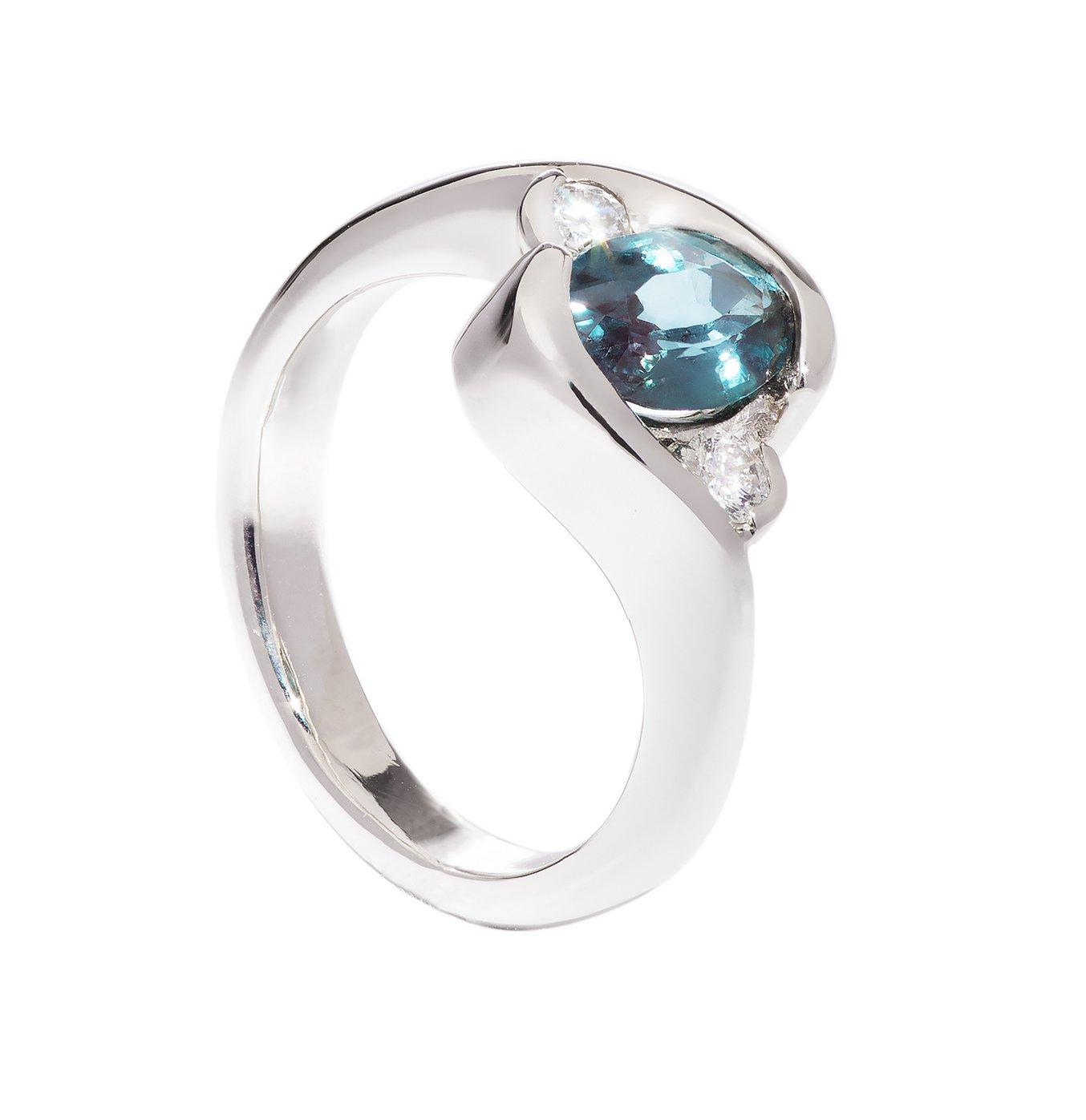
When Formlabs co-founder, Max Lobovsky, was looking to propose to his fiancée Nadia, he knew that he wanted to give her something special. He took inspiration from Alexandrite, a stone known for its color-changing effect. With the special stone in mind, Max set out to find partners to help design and cast a custom engagement ring.

Looking for the Right Partners
I knew I wanted to use Alexandrite, a unique stone with color-changing properties, in the final ring (because diamonds are boring ;) ), as well as to 3D print the ring with the Form 1+ desktop 3D printer and have it cast. After talking to several jewelers in Boston, I found Ed Spencer at Skylight Jewelers who knew a lot about unusual stones, and was happy to work with the stereolithography printed ring.


After we found the perfect stone, I looked at some of his designs and we discussed what the ring would look like. He took some wax patterns of other designs he had in his shop and modified one to look like what I wanted right in front of me in a few minutes, after which I then asked him if he could get me a 3D model of the ring. As my CAD experience is more mechanical, I asked a few other people to model some versions including Martin Galese, who is our lawyer at Formlabs, and Jay Bradshaw, a freelance CAD designer who created the final design.

The Investment Casting Process
Through this process, I printed out several versions of the ring. When I was happy with it, I took a print to Ed Spencer who had the ring cast. Ed said the cast polished just as easily as any other printed one he has used.

Tips & Tricks for Designing a 3D Printed Ring
Ed Spencer, from Skylight Jewelers, gave some advice on how to make sure your jewelry 3D prints will be successful
- Frequently reduce the size of the computer screen image to actual size and contemplate before printing. When designing on a screen the piece looks way larger than it really is and so details are commonly created when zoomed in. When reduced to actual size, details are hard to see and become texture and noise rather than form.
- Make sure your details are deep. Some people’s designs created using CAD/CAM software include details that are too shallow to show up on a small object such as a ring.
- There is a tendency to make the elements too thin and delicate, which reduces structural integrity. This includes the common use of extremely small diamonds or other side gems: at that size they are difficult if not impossible to clean without special equipment.
Go behind the scenes with Golden Century Casting to see how fine jewelry is created. This family-owned casting house fuses new technology with age-old craftsmanship to create beautiful designs.
Read the story of how Luke Winston used 3D printing to create an engagement ring that combines his fiancée Raven's Tlingit heritage with his own Zuni background.


